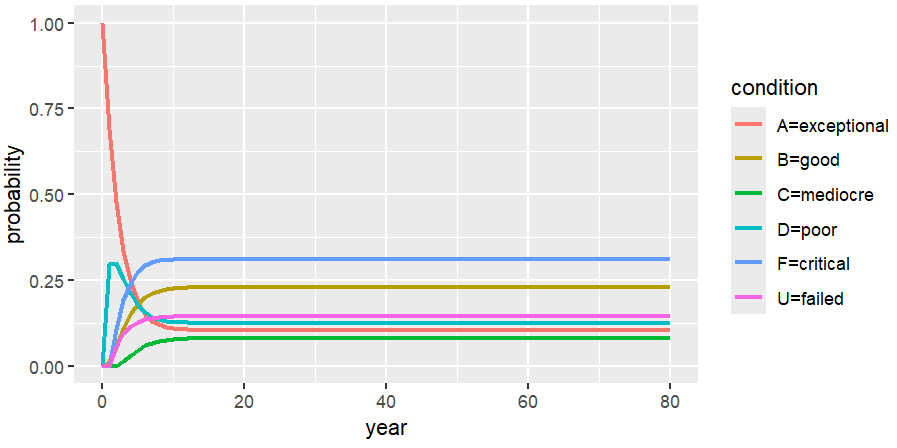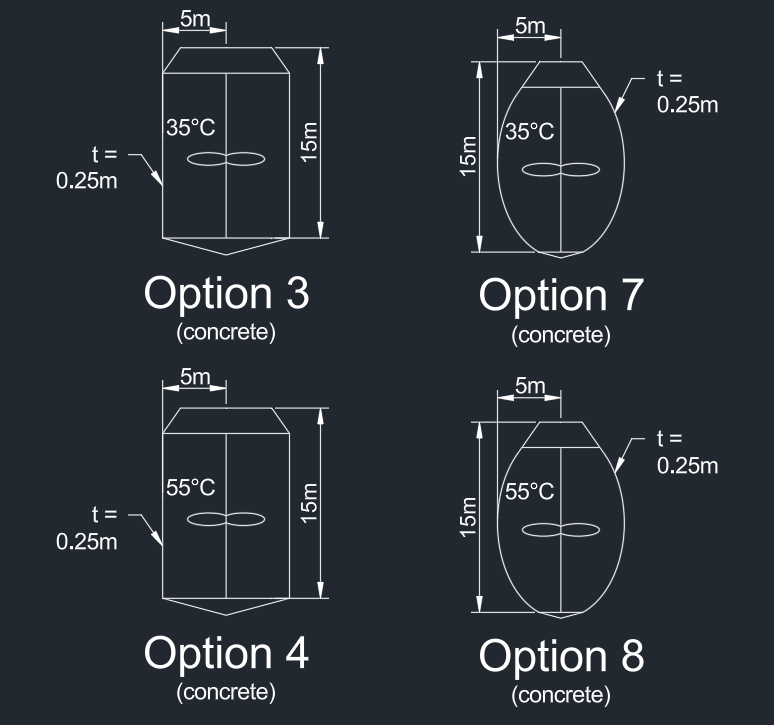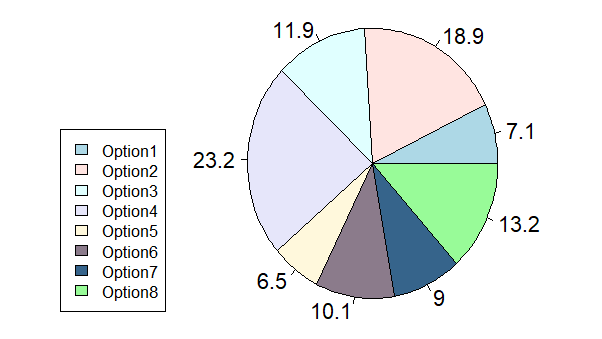Phase 1: Risk and failure in a wastewater treatment plant
The risk-based assessment of wastewater treatment plant (WWTP) condition modeled state changes in the programming software R to better understand the life cycle of the system. The first phase of the research used a Markov chain to understand the degradation of the system under normal conditions, where the inputs are limited to the current condition of the system and time. The second phase of the research used a fault tree analysis including the likelihood of special events to determine the influence of these special events on the probability of the condition of the system after a certain number of years. The final phases of the study used (a) the transition probabilities from the Markov chain analysis to calculate the mean time to failure (MTTF) and mean time to repair (MTTR) and (b) a Value of Information calculation to evaluate the financial implications of making a repair to the system versus not making a repair as well as the implications of perfect information regarding the failure event. Figure 1 summarizes the distribution of states of a WWTP when repairs are included in the model.
Figure 1: Distribution of state probabilities for WWTP after 80 years including repairs
Phase 2: Design options for a sludge digester
The goal of the life cycle analysis (LCA) was to weigh the options for constructing an anaerobic sludge digester to find the option that best optimizes cost, carbon footprint, energy use and output efficiency. This question was of great interest because relatively few comprehensive studies are available online on the subject, and especially with the increasing use of sludge digesters to recover resources such as biogas and fertilizer, it makes sense to factor the carbon footprint into the system in addition to a simple life cycle cost balance. The study is intended to serve engineers in the early planning phases of a wastewater treatment plant as they evaluate design alternatives as well as local or regional wastewater engineers strategizing long-term capital expenditures over a 10+ year horizon. The life cycle analysis focused on the following design parameters: shape (cylindrical vs. egg-shaped), outer material (concrete vs. steel), mixed vs. unmixed, and thermophilic vs. mesophilic (operating temperature of 35 vs. 55 °C), some of which are summarized in the figure below.
Figure 2: Selected options for the sludge digester design
Without a framework for evaluating the relative importance of the characteristics of each of the models and their values, the selection of a design option is left to opinion. To avoid this, the decision-making model incorporated a multi-criteria decision analysis using the analytic hierarchy process (AHP). It was found that Option 4 is the preferred alternative, which makes sense given that it is one of two reactors with the highest profit as well as having the lowest carbon footprint (along with option 3).
Figure 3: Results of the analytic hierarchy process which favors design option 4


